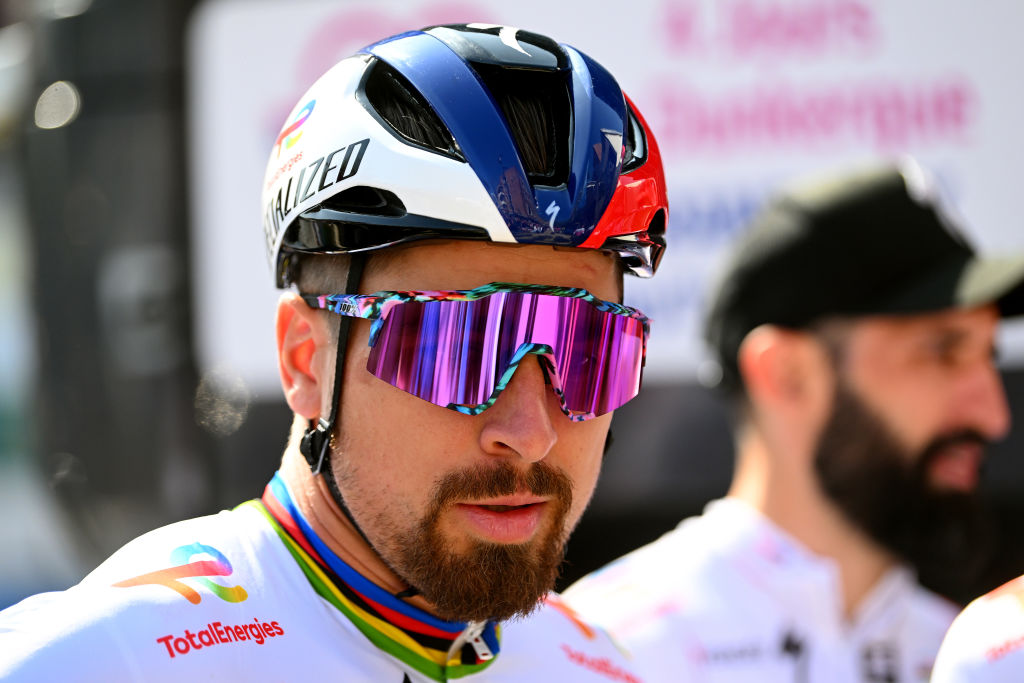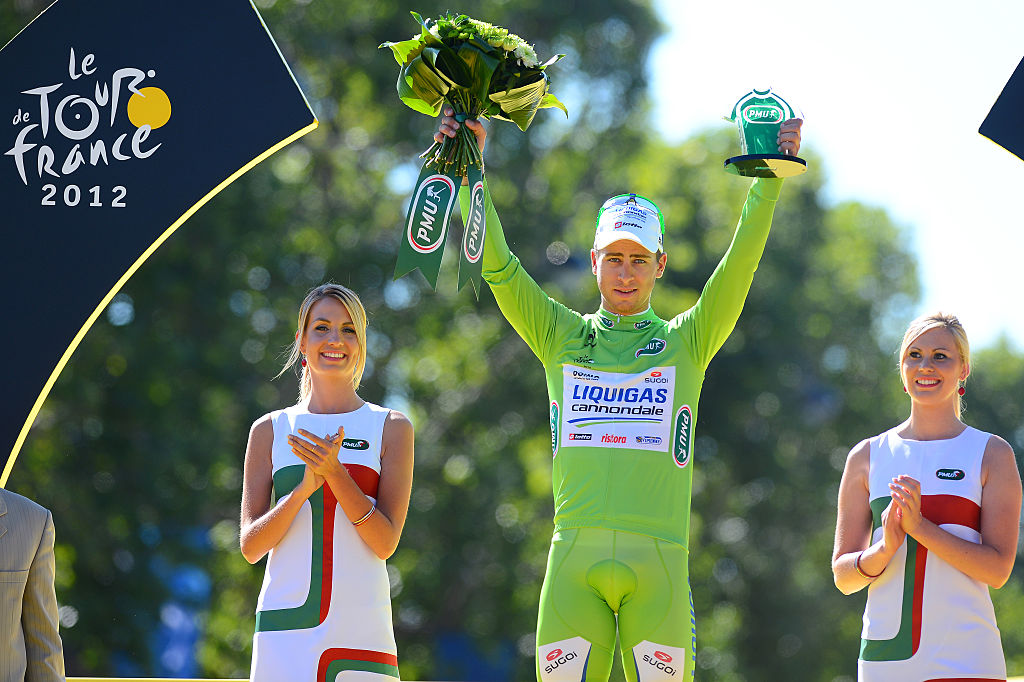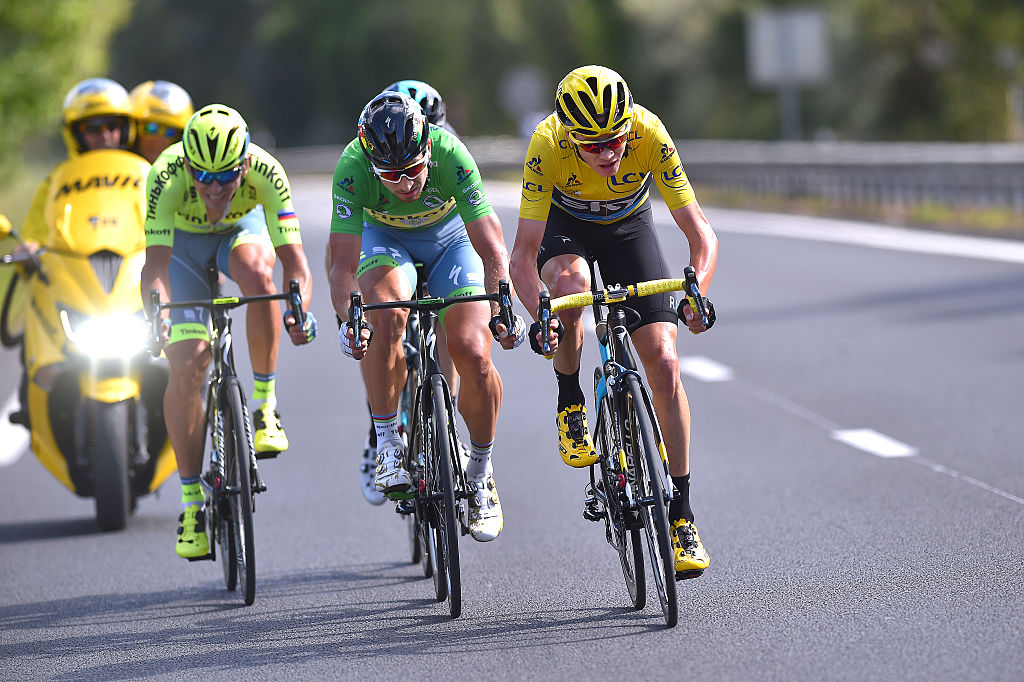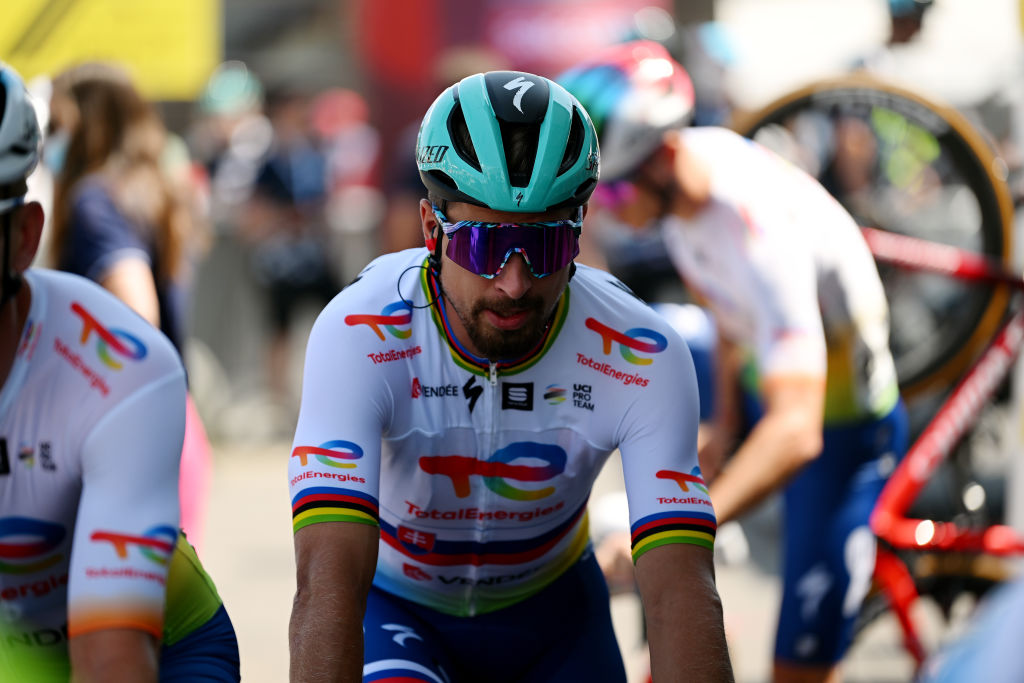Peter Sagan: the Tour de France changed my life
Seven-time green jersey winner looks back at his glory years

Peter Sagan will travel to Bilbao next week to start his twelfth and final Tour de France of his career. It will be his final chance to win a stage, his final chance to win the green points jersey or at least wear it for a day, and his final chance to savour the race that changed his life forever.
Sagan plans to retire from WorldTour road racing at the end of 2023 and then end his career where it all began, in mountain biking, with the 2024 Paris Olympics his final event.
His palmares includes 121 pro victories. He won three World Championships titles, has a Paris-Roubaix cobblestone trophy at home as well, and is an adopted Flandrien after capturing the Tour of Flanders.
Yet it is Sagan’s success in France in July, his 12 stage victories, numerous placings, his yearly fight for the green jersey and larger-than-life character that made him a star of the sport and a personality in the peloton.
Peter Sagan crashes out of final Paris-Roubaix with concussion
‘Milan-San Remo is all or nothing’ – Peter Sagan faces last dance on the Poggio
Peter Sagan's bike: The Slovak's 2023 machine and a look back at his glittering bike archive
Seeing life from a different angle – Peter Sagan faces final curtain on the road
Sagan likes to have fun in life and he rarely takes himself too seriously. He hates being asked about the future and always avoids showing his deepest emotions in public but he is always sincere.
He is the same, at least for now, even about his final Tour de France.
“The Tour de France is always too hard to get emotional about it all. You never ride the Tour for fun or as a farewell,” he tells Cyclingnews, shielding any emotions that may be growing in his mind as the Grand Départ in Bilbao nears.
Get The Leadout Newsletter
The latest race content, interviews, features, reviews and expert buying guides, direct to your inbox!
“You've got to suffer and stay focused every day to get through the Tour and do as well as you can. I’ll perhaps get emotional when we get to Paris but there’s a long way to go before then.”
Even when Sagan stops WorldTour road racing, he won’t miss the pressure, expectation and daily demands he has faced for over a decade every July.
“The Tour creates some special, intense emotions but you have to suffer for the magic to happen,” Sagan suggests.
“Of course I’m grateful to the Tour, it changed my life. Winning stages and winning seven green jerseys changed my life. Every rider dreams about riding the Tour de France and of winning a stage, but I think every rider has a love-hate relationship with the Tour. I definitely do.”
The man in green

The Cyclingnews photo archives tell the story of Sagan’s 11 rides at the Tour de France. His face, his stature in the sport and even his riding style changes with each year.
Sagan made his Tour de France debut in 2012, still a freshed-faced and carefree 22-year-old. He had won stages at Paris-Nice and the Tour of California in 2010 and even on his Grand Tour debut at the 2011 Vuelta a España. But the way he won three Tour stages and his first green jersey made him stand out, even if Team Sky dominated and controlled much of the racing.
Sagan went on to win the green jersey for five consecutive years, wore the yellow jersey twice and won his 12 stage victories. Most of his other major career victories were all during the same era of non-stop success.
His reign at the top only ended in 2017 when he was disqualified for a clash of elbows with Mark Cavendish that saw the Manxman crash into the barriers at high speed. Sagan came back to win again in 2018 and 2019 but the COVID-19 pandemic disrupted his 2020 and 2021 season and led to his move from Bora-Hansgrohe to TotalEnergies.
After his career burnt so bright from being so young, Sagan’s decline began in earnest in 2022 as he turned 30, even if his charisma, bike skills and sense of mischief remain.
“I was at Liquigas when I rode my first Tour and I think it was one of my best ever performances,” Sagan recalls of his Grand Boucle debut.
“I didn’t know what to expect and didn’t really have any pressure on my shoulders but it turned out to be a great Tour. I won three stages, won the green jersey and I had a lot of fun.
“I realised the Tour de France is so different to other races, it’s a different world and so much bigger than any other race. All the rides are at their very best for the Tour and everything we do is scrutinised by the fans and the media so much more. You sense all of that during every moment.”
Sagan admits he can’t remember the dynamics of every Tour de France stage he has won but the 2012 wins still burn bright, also because of the controversy he sparked straight away.
Fabian Cancellara was in the yellow jersey after winning the prologue time trial around Liège. He jumped away on the rolling finish to Seraing and Sagan stuck to his wheel, refusing to do a turn all the way to the line. He then surged away to victory, celebrating by flexing his muscles as he crossed the line. A Tour de France star was born.
Two days later he won again, distancing Cancellara and everyone else for a second time. He celebrated in style again and even pulled a Hulk muscle pose when he won in Metz on stage 6.
The fans and television loved it but Cancellara and other riders in the peloton weren’t so captivated.
“I was young and celebrated by doing different celebrations for a bit of fun but Fabian wasn’t too impressed when I sat on him and then sprinted past him…” Sagan recalls, with little regret.
“When I won Tour stages I liked to celebrate and be spontaneous. I don’t think there’s anything wrong with that, no?”
Into the crosswinds

In 2016, when Sagan was already riding for the Tinkoff team, he took one of his best wins in an attack in the crosswinds in the south of France.
“That was a special one,” he suggests.
“Four of us got away and we raced hard to the finish, holding off the peloton. I was with my teammate and good friend Maciej Bodnar, while Chris Froome was with Geraint Thomas, with everyone else trying to chase like crazy behind. I wanted Bodnar to win but Froome went early in the sprint and so I had to go after him and beat him.”
Sagan wore the race leader’s yellow jersey for three days in 2016 and for another day in 2018. But it was his long spells in the green jersey year after year and his seven visits to the final podium in Paris that tell the story of his Tour de France career.
Sagan’s climbing ability gave him a distinct advantage on the pure sprinters and he was able to score precious points in stages where most of his rivals were distanced.
Often Sagan and his teammates would turn a transfer stage across the hills of central France into a hard day of racing, so he could hurt the sprinters and collect a haul of points.
“There were perhaps one or two stages during each Tour that helped me win the green jersey,”Sagan explains.
“With the whole team and a tactical plan, we hurt everyone, dropped the pure sprinters and drove hard to the finish to score maximum points. I was the team leader and in green but we did a lot of great performances as a team. They were hard days but perhaps fun days too.”
Sagan claims he is not an aggressive sprinter. He uses his bike skills to position himself on the right wheel in the final kilometres and then looks for a clear run to the finish line. Of course there have been bumps, clashes of elbows and controversies along the way, but without genuine malice.
The video images of the 2017 sprint to Vittel, when Sagan appeared to close the door on Cavendish with his elbow and the Manxman crashed at speed looked terrible front on. But the full dynamic of the sprint was more complex. Sagan has always insisted he never did anything wrong, even if he was disqualified from the Tour de France and it caused a major rift with Cavendish.
“I don’t think I’ve ever sprinted with anger or aggression. What happened was just bad luck,” he tells Cyclingnews, keen to find a positive side to it all.
“When your Tour ends like that it’s always difficult to take but there was also a silver lining,” he says now.
“That year I was able to go on holiday with some friends in July for the first time in my career. That’s the good thing I remember about that Tour.”
Tour de France 2023: Sagan's goals

Sagan has not won a race since last year’s Slovakian National Championships and has not won a stage at the Tour de France since 2019, when he beat Wout Van Aert in Colmar en route to his seventh and final green jersey.
There have been plenty of placings, perhaps far too many for Sagan’s liking, as the likes of Van Aert, Mathieu van der Poel, Tadej Pogacar and Remco Evenepoel have taken Sagan’s crown as global stars of the sport.
They seem to have created a new ‘bazball’ style of racing, to quote cricket’s new style of aggressive play. In truth Sagan was arguably the unwitting precursor and so inventor of the so-called ‘new cycling’ post-pandemic style of racing.
Despite a lack of recent success and suggestions Sagan is well past his best, he keeps racing and keeps diving into the sprint finishes, hoping one will go his way. He has not given up hope of success in his final Tour.
Sagan trained at altitude in Utah in May and recently rode the Tour de Suisse, finishing fifth on stage 2. He has since done an endurance block and will ride the Slovakian national championships before travelling to Bilbao for his final Tour of France.
“I want to do my best, do the best I can,” he tells Cyclingnews.
“I hope to win a stage and be in the thick of the racing. It’s becoming harder and harder to win the green jersey and I know I can’t turn back the tide of time, but you never know what can happen. To have a chance of victory, you have to be up there and in the fight every day.”
“We’ll see where the roads of France take us day by day. The most important thing is to finish the Tour in Paris, to ride onto the Champs Elysees safely, to celebrate finishing my last Tour.
“That’ll be the best way to end my career at the Tour de France, that will make me happy, satisfied and proud of what I’ve achieved.”

Stephen is one of the most experienced member of the Cyclingnews team, having reported on professional cycling since 1994. He has been Head of News at Cyclingnews since 2022, before which he held the position of European editor since 2012 and previously worked for Reuters, Shift Active Media, and CyclingWeekly, among other publications.